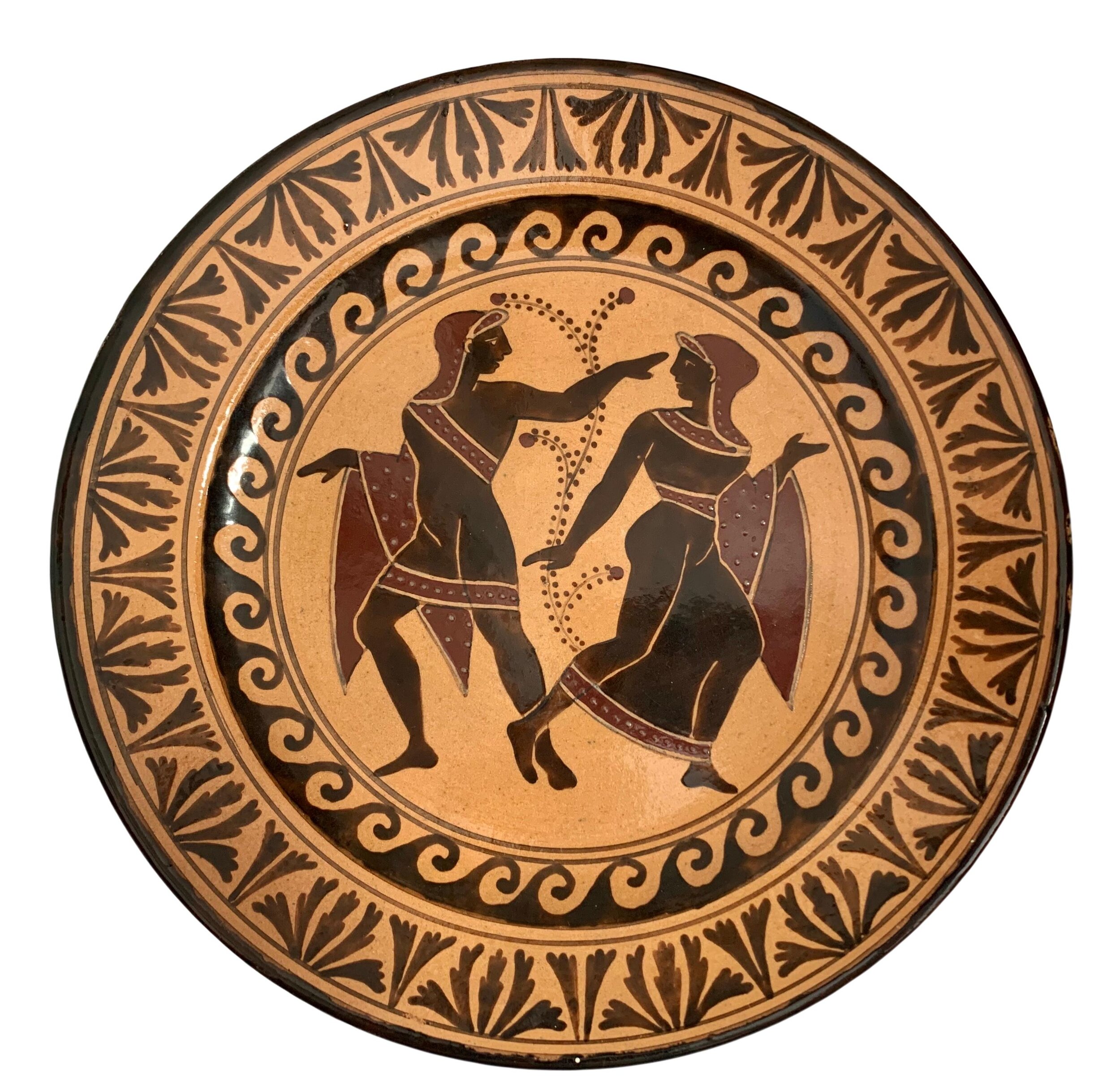Isabella of Bourbon queen of Naples
A French porcelain jug "Old Paris" or "Nast" manufacturing decorated with gold in Naples, in the center is painted a large miniature depicting Maria Isabella of Bourbon-Spain queen consort of Francis I of Bourbon-Two Sicilies king of Naples.
Attributable to Raffaele Giovine's atelier.
Period 1825/30.
Dimensions height 28 cm - diameter 17 cm.
Excellent condition commensurate with use and age. Small loss to the gilding.
A French porcelain jug "Old Paris" or "Nast" manufacturing decorated with gold in Naples, in the center is painted a large miniature depicting Maria Isabella of Bourbon-Spain queen consort of Francis I of Bourbon-Two Sicilies king of Naples.
Attributable to Raffaele Giovine's atelier.
Period 1825/30.
Dimensions height 28 cm - diameter 17 cm.
Excellent condition commensurate with use and age. Small loss to the gilding.
A French porcelain jug "Old Paris" or "Nast" manufacturing decorated with gold in Naples, in the center is painted a large miniature depicting Maria Isabella of Bourbon-Spain queen consort of Francis I of Bourbon-Two Sicilies king of Naples.
Attributable to Raffaele Giovine's atelier.
Period 1825/30.
Dimensions height 28 cm - diameter 17 cm.
Excellent condition commensurate with use and age. Small loss to the gilding.
From the archives we know that Maria Isabella commissioned Raffaele Giovine to create objects decorated with portraits of her children to present to her husband, a great admirer of Giovine’s work. This custom had been established by Francesco I whilst still Crown Prince, to mark San Ferdinando’s Day with gifts specifically created to commemorate Ferdinando I (formerly IV). These objects were imbued with complex symbolic meanings which were also expressed through texts and affectionate rhymes inscribed to the reverse of vases which are currently housed in the Palazzo di Capodimonte. This tradition was continued by Maria Isabella after Ferdinando’s death. Evidence to support this is seen in the musical centerpiece in the Museo di Capodimonte (which appears in the post-mortem inventory of Francesco I in his private rooms in “Stipo n. 21”). This elaborate centrepiece in Paris porcelain, gilt-bronze and wood is reserved with named portraits on a ground simulating malachite; the portraits are almost certainly by the same hand as the present pair of vases. Examination of the same inventory reveals the existence of another pair of amphora-shaped vases with column handles which also belonged to Francesco I. These are currently housed in the Royal Palace of Caserta and are decorated with portraits of the Royal couple and ten of their twelve children reserved against elaborate tooled gilt bouquets of flowers on a mottled blue ground, also reminiscent of the present vases. The inventory reveals that these miniatures were executed by Giovanni Varriale, an artist we know because he received an award for this work from the Esposizione di Belle Arti.
According to custom, the Royal commissions followed a specific course; the Queen would make her request to the Capo di Real Tapperzzeria (Head of the Royal Tapestry Works) who would in turn pass the order on to the resident architect (Antonio Niccolini and Pietro Bianchi at this time). The architect would then commission the most suitable artist to carry out the work and supervise its execution. It was usually Raffaele Giovine who would be commissioned for this finial stage. Whilst he was not the most famous Neapolitan miniaturist at the time, he was a skilled entrepreneur. From this business card we know he was Incaricato degli Argenti di S. M. Il Re delled due Sicilie (Head of Silver for H.M. The King of the Two Sicilies). In this position as a Neapolitan Marchand Mercier he could surround himself with the best local painters, sculptors and ébénistes






